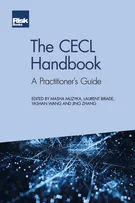Default Risk Charge: Standardised and Internal Models Approaches
Overview and Impact
The Boundary Between Trading and Banking Books Under FRTB
Moving from Value-at-risk to Expected Shortfall
The Standardised Approach
The Internal Models Approach
Default Risk Charge: Standardised and Internal Models Approaches
P&L Attribution and Backtesting
Regulating and Managing Non-modellable Risk Factors
Impact of a Capital Floor
Managing Regulatory Trading Desk Frameworks
Implementation of FRTB Framework
Model Frameworks and Management
Regulatory Responsibilities and Supervisory Framework
FRTB January 2017 FAQ Response and Review
“When you lose control of risk at a financial institution, you do a variety of unfortunate credit extensions or purchases – and all of a sudden, you’ve blown up your business” – Stephen A. Schwarzman
The Default Rule Change (DRC), applied in both its standardised and internal models form, is designed to ensure that the risk of jump-to-default (JTD), not simply the risk of credit migration, is applied to trading activities. The BCBS explicitly calls for DRC calibration to be aligned with “credit risk treatment in the banking book to reduce the potential discrepancy in capital requirements for similar exposures across the banking and trading books”.11 BCBS, d352, p. 3.
In this chapter, we will review the mechanical implementation of the DRC under the SA, then turn to the less-prescriptive DRC approach required under the IMA, and conclude with a glossary of credit terms as reference to trading and risk professionals more accustomed to market risk activities. We start by exploring the foundations of credit risk as implemented within the banking book, to help us understand how those foundations apply to the concept of default within FRTB’s market risk framework.
FOUNDATIONS OF
Copyright Infopro Digital Limited. All rights reserved.
You may share this content using our article tools. Printing this content is for the sole use of the Authorised User (named subscriber), as outlined in our terms and conditions - https://www.infopro-insight.com/terms-conditions/insight-subscriptions/
If you would like to purchase additional rights please email info@risk.net
Copyright Infopro Digital Limited. All rights reserved.
You may share this content using our article tools. Copying this content is for the sole use of the Authorised User (named subscriber), as outlined in our terms and conditions - https://www.infopro-insight.com/terms-conditions/insight-subscriptions/
If you would like to purchase additional rights please email info@risk.net





